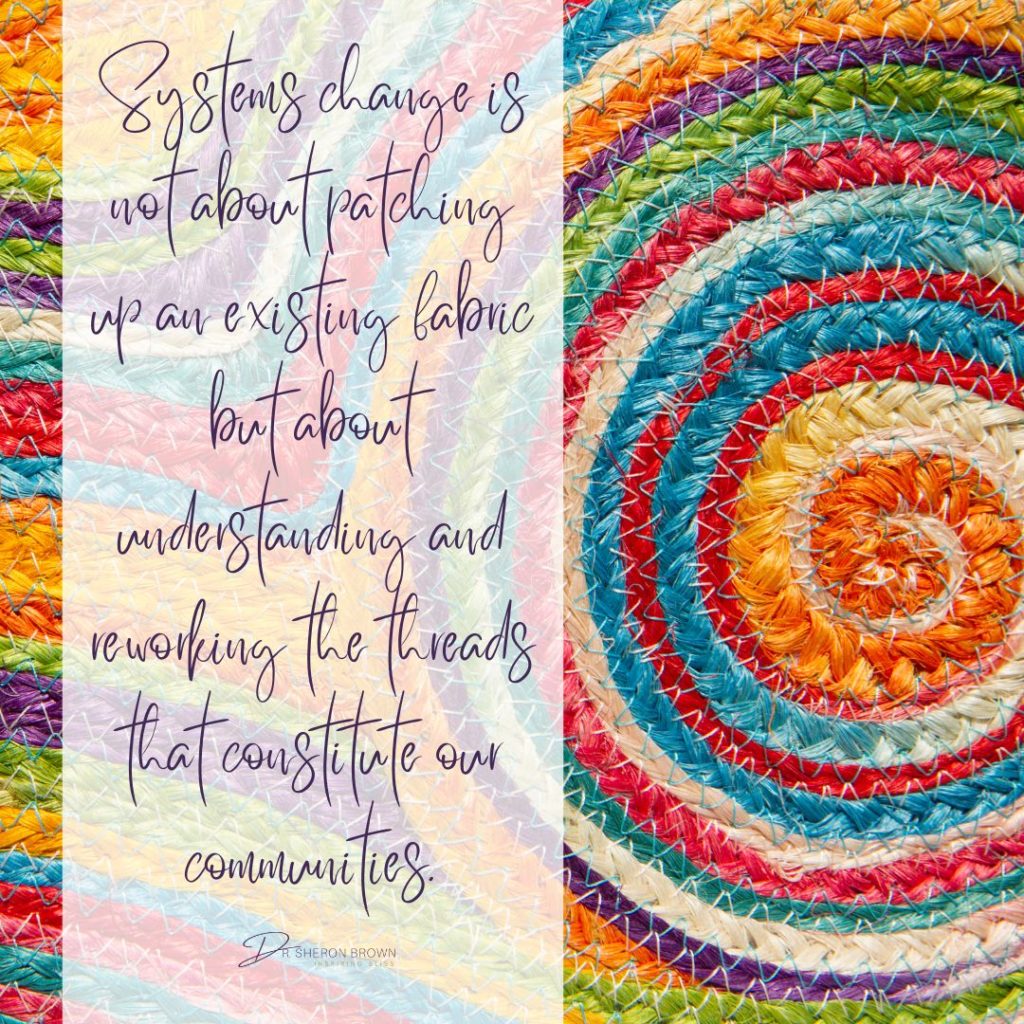Transformation is at the heart of the work we do as change-makers. Yet, as we embark on this transformative journey, we encounter intricate and complex problems, much like the threads in a tapestry. Systems change represents an elaborate weave to undo social challenges, and conscious collaboration is the meticulous art of crafting it.

The Intricate Design of Systems Change
Systems change is not about patching up an existing fabric but about understanding and reworking the threads that constitute our communities. It’s recognizing that a tweak to a single thread, say in education, may ripple through healthcare, housing, or employment.
For example, consider the introduction of a new educational program for underserved children. While it addresses educational disparities, it may also influence children’s overall well-being, potentially reducing healthcare costs or improving parents’ workplace productivity.
The intricate interconnections within our community systems mean that an adjustment in one area reverberates through other sectors. This delicate balance reinforces the idea that every decision, every action taken, has consequences, sometimes far-reaching and unexpected. As we navigate the landscape of social change, it becomes paramount to be discerning and deliberate. Recognizing the potential domino effects allows us to make informed choices, ensuring that our efforts in transformation are not only impactful but also sustainable and holistic.
Conscious Collaboration: The Art of Weaving Together
Conscious collaboration is the methodical process for engaging in collaboration mindfully while intertwining diverse threads, with an understanding of the pattern or outcome we wish to create. It’s not mere teamwork; it’s a harmonious blend of mindfulness, intent, and shared purpose.
Harnessing the Depth of Conscious Collaboration:
Inclusive Dialogue: Fostering spaces where every voice, especially those often silenced, is heard. For example, when planning a community garden, inviting feedback from not only urban planners but also local residents and children while being mindful of power dynamics ensures the garden meets varied needs.
Shared Vision: Setting mutual goals that resonate with all collaborators. A community aiming to reduce homelessness might find consensus in building affordable housing while also addressing job training and mental health services. Each element with the goal represents the focus of each collaborator, allowing for true collaboration versus teamwork.
Continual Reflection: Taking moments to pause, reflect, and adapt. In our journey through the Conscious Collaboration Pathway™, we’ve observed that the most resilient collaborations are those where partners revisit their strategies, learn from setbacks, and celebrate wins. It is easy to move past these actions, but taking time to engage in this is critical for collaborative success.
Empowering Nonprofits: Becoming Master Weavers
For nonprofits and community foundations, the call is clear: to become master weavers in this tapestry of systems change. It demands skills, yes, but more importantly, it demands heart – the ‘heartware’.
Practical Steps:
Skill-building Workshops: Organize and attend workshops focused on effective communication, conflict resolution, and stakeholder engagement.
Community Feedback Loops: Regularly gather feedback from community members. For instance, after launching a new initiative, host community forums to understand its impact and areas of improvement.
Celebrate Diversity: Embrace the strength in diverse perspectives. If working on a multicultural community project, ensure representatives from each culture are involved, valuing their unique insights and contributions.
To weave a resilient tapestry of community wellbeing and equity, we must intertwine our strengths, skills, and spirits in a dance of conscious collaboration. As we pull the threads of systems change, let’s ensure that every loop, every twist, and every pattern resonates with the collective hopes and aspirations of our communities.

Recent Comments